
Five Books Every Landowner Should Read
As winter begins to give way to the first hints of spring, there is still time to settle down with a good book that could inspire some upcoming 2023 property management projects. Here are a few reading suggestions from some experienced Wisconsin conservationists that you might find inspirational. You might even decide to tuck one of these titles into a pocket as you head outdoors.

Invasive Plants of the Upper Midwest
University of Wisconsin Press, 2005
By Elizabeth Czarapata
We can all use a hand when confronting invasive plants on our property. Mary Bartkowiak, Forest Invasive Plant Coordinator for the Wisconsin DNR, has an old favorite to recommend that stands the test of time — Invasive Plants of the Upper Midwest. “Although it is rather old, it is a good book with details about many invasive plants and how they can be controlled. I would say it was pretty forward-thinking when was first published.”
Author Elizabeth Czarapata, former director of the Weed-Out Program of The Park People of Milwaukee County and winner of the Wisconsin Council on Invasive Species 2005 Invader Crusader Award, wrote the book to be an essential resource for land managers, property owners, farmers, and foresters. The information was reviewed by a number of invasive plant experts, including the Wisconsin DNR Bureau of Endangered Resources and the UW-Madison Arboretum.
This guide includes more than 250 color photos to help identify invasive trees, shrubs, vines, grasses, and sedges, including both herbaceous and aquatic plants.
Of course, newly invasive plants continue to appear in Wisconsin, and Bartkowiak suggests augmenting the book with info on the latest invaders online using the Midwest Invasive Plant Network website and Woody Invasives of the Great Lakes Collaborative.
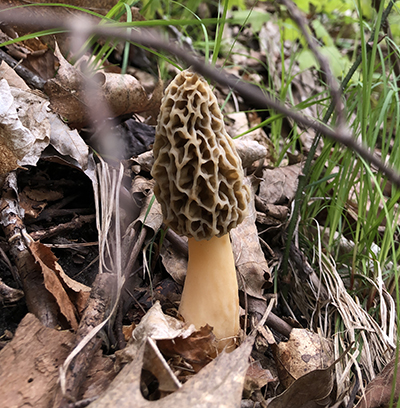
Field Guide to Common Macrofungi in Eastern Forests and Their Ecosystem Functions
USDA Forest Service, 2011
By Michael E. Ostry, Neil A. Anderson, and Joseph G. O’Brien
Would you like to grab a good field guide and go searching for something more fun like fungi? “I have a field-sized copy and find it both useful and accessible,” says Paul Cigan, DNR Forest Health Specialist. “It describes the ecosystem where you are likely to find each particular species. For example, there is a section for Aspen and Birch ecosystems that we find in Northern Wisconsin and the types of fungi likely to be there. When you are out in the field, you can start your inquiry on what are the dominant tree species around you and home in on which fungus you might be looking at.”
“It has really good photos and straight-forward descriptions, as well as the season of fruiting, and its ecosystem function — saprophytes are ones that use enzymes to digest wood (basically living on dead material) as opposed to the mycorrhizae that physically link in with tree root systems and engage in a mutualistic relationship,” says Cigan. “This book is good both for experts and beginners who want to do some fungal identification.”
You can order it from your favorite bookstore or download a copy from the USDA
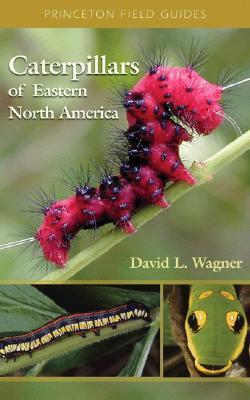
Caterpillars of Eastern North America: A Guide to Identification and Natural History
Princeton University Press, 2005
By David L. Wagner
We all know how valuable butterflies and moths can be as pollinators, but caterpillars can be beneficial, and every bit as beautiful. Caterpillars are packets of protein that many birds, especially nesting birds, rely on. Their value can outweigh the few ragged leaves they leave behind. On the other hand, they can devastate crops and forests. That makes it crucial to know what kind of caterpillar you have discovered on your land.
“I almost always find the caterpillar I want to identify with in this book. It’s a must-have for caterpillar enthusiasts,” says Mike Hilstrom, Wisconsin DNR Plant Pest and Disease Specialist.
There are more than 1,200 color photographs that are often as vivid and striking as the caterpillars they portray. There are full-page accounts of almost 400 species with information on distribution, seasonal activity, food plants, and life history. You will find images of earlier instar stages, closely related species, noteworthy behaviors, and other intriguing aspects of caterpillar biology. This is an easy-to-use guide to caterpillars for those of us east of the Mississippi River.
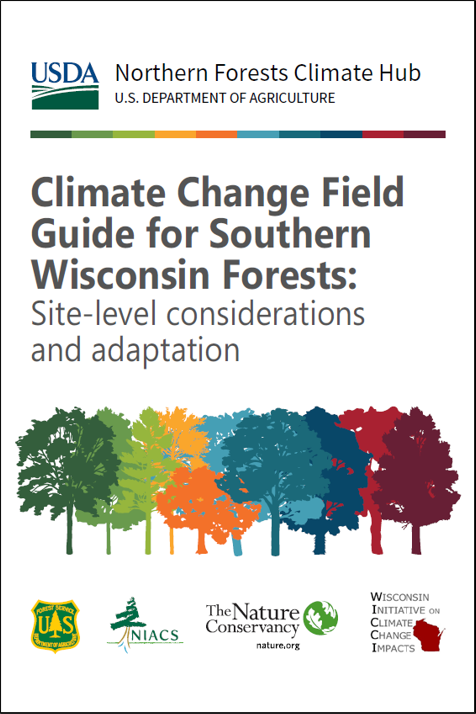
Climate Change Field Guide for Southern Wisconsin Forests: Site-level considerations and adaptation
&
Climate Change Field Guide for Northern Wisconsin Forests: Site-Level Considerations and adaptation, 2nd edition
Landowners tend to take a long view when making their management decisions, and these two books can provide some valuable guidance. “These are a good primer for forest owners who want to understand what changes we might go through in the next century,” says Paul Cigan. They provide a great overview of changes we are likely to see, such as temperature changes and the amount of frozen ground.”
These volumes are created by the Climate Change Response Framework, a collaborative, cross-boundary approach among scientists, managers, and land owners to incorporate climate change considerations into natural resource management.
“They look at how overall climate change is going to impact disturbance events like wildfires, and insect and disease outbreaks. For instance how damaged wood on the ground can serve as a breeding ground for insects that would otherwise be more benign,” says Cigan. “They break Wisconsin into different ecological sections and look at over 30 different native tree species to ask how well each species will do in the future, and highlight those that will not establish well.”
A laminated, spiral-bound copy of these guides are available by emailing Stephen Handler, Climate Change Specialist, U.S. Forest Service, at stephen.handler@usda.gov. These guides are also available online: Southern version & Northern version. Each offers a 2-page download of tree species for each ecological section.
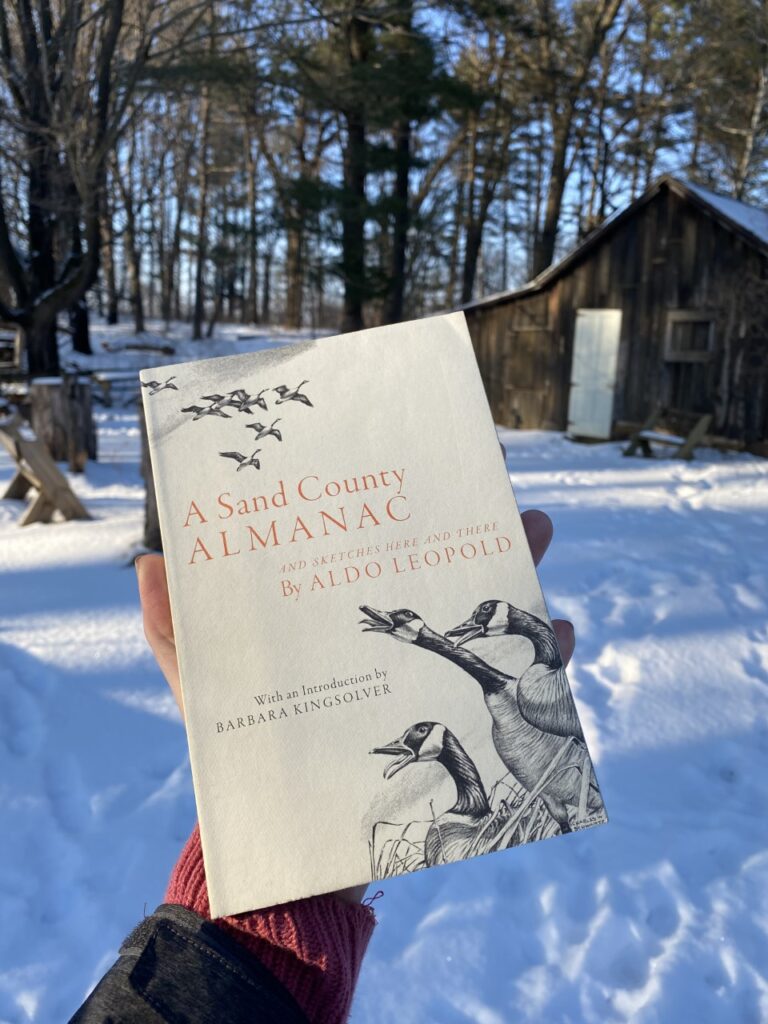
A Sand County Almanac
First published in 1949 and translated into 15 languages
By Aldo Leopold
What land owner’s bookshelf is complete without A Sand County Almanac? “If I were going to a desert Island and could only take the number of books I could carry, A Sand County Almanac would be in my arms,” says Kathy Miner, UW-Madison Arboretum Naturalist. Miner coordinated the annual Madison Reads Leopold for 15 years at the Arboretum, an event where attendees take turns reading Leopold’s words of wisdom to the assembled group.
Miner first encountered this volume as an undergrad at UW-Madison in 1972. “I had to have a science credit, so I signed up for a course called Resources and Man. I had never heard of Aldo Leopold, but A Sand County Almanac was required reading, so I paid 50 cents for a used copy that I still have. I was stunned by the beauty of the writing. Suddenly environmental awareness and the word ecology was everywhere I looked.”
Inspired by a Lodi Reads Leopold event in 2000, Miner organized something similar at the UW-Madison Arboretum in 2006. Over the years almost 3,500 people have attended the event to share Leopold’s words.
This year Madison Reads Leopold: Voices of a Land Ethic will take place at the Arboretum from 1 to 4 p.m., Saturday, March 4. Listeners may come and go throughout the free event at the Visitor’s Center. Any of these five titles would make an excellent selection for finding inspiration and practical guidance in furthering your land management knowledge, but of course, there are many other books and references that might suit your needs as well.
Honorable Mention: Leopold Week 2023 Books
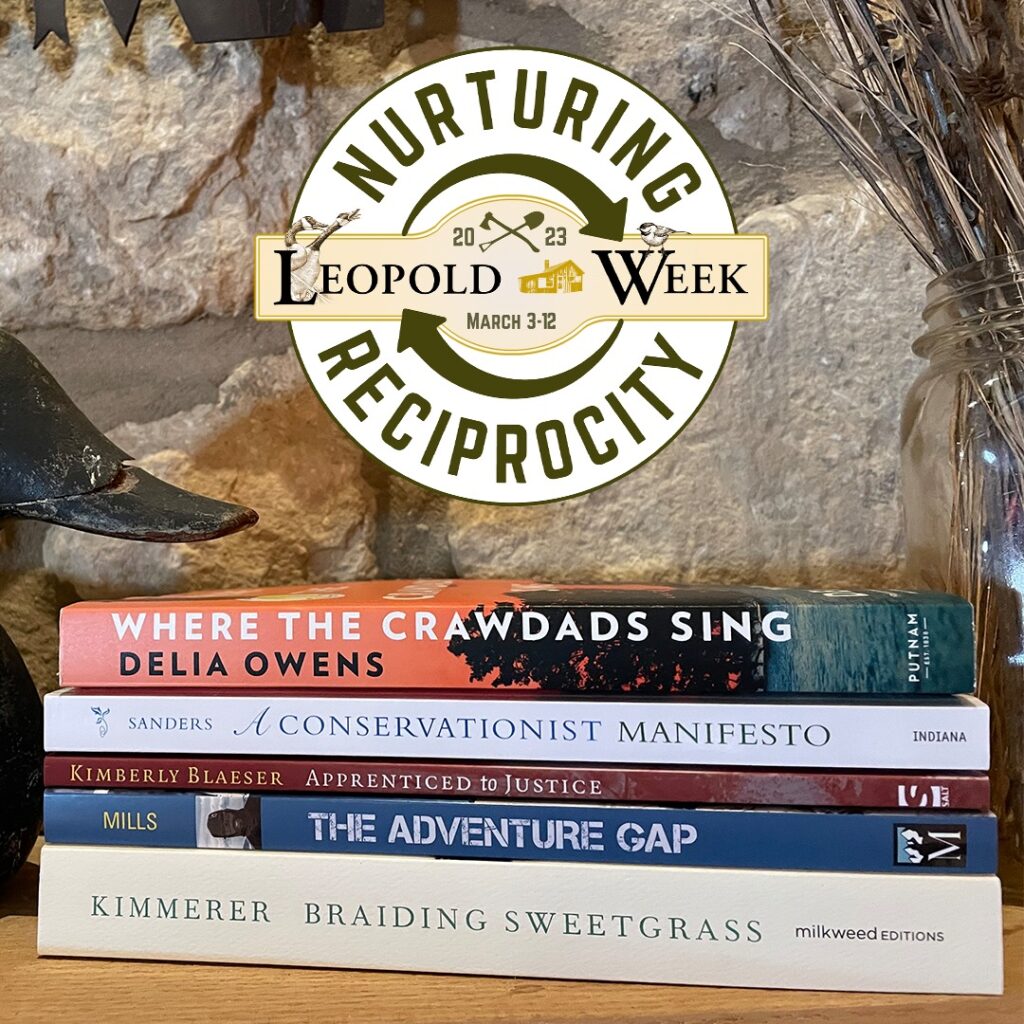
Leopold Week 2023 will take place from March 3 to March 12. It is an event that aims to promote reciprocity with the environment and each other through the guidance of leading conservation writers, educators, and activists. Interested individuals can register for Leopold Week 2023 at this link: https://www.crowdcast.io/c/leopoldweek23.
- Where the Crawdads Sing – Written by Delia Owens
- A Conservationist Manifesto – Written by Scott Russell Sanders
- Apprenticed to Justice- Written by Kimberly Blaeser
- The Adventure Gap: Changing the Face of the Outdoors – Written by James Edward Mills
- Braiding Sweetgrass – Written by Robin Wall Kimmerer
By Denise Thornton
